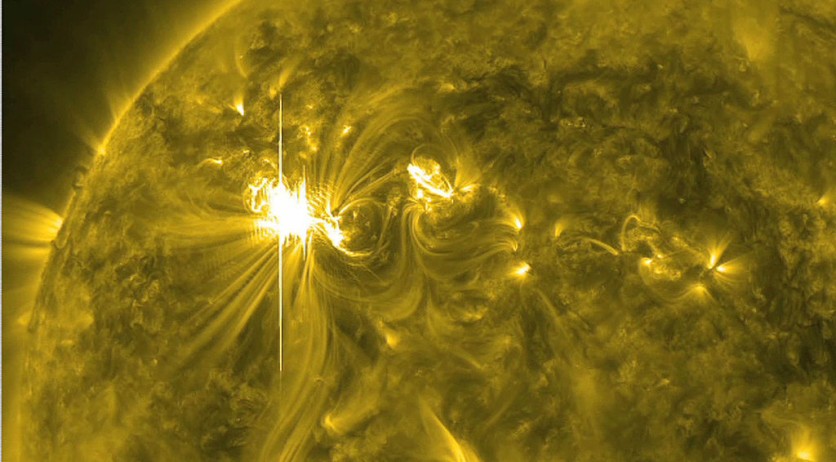A group of NASA scientists has discovered new hints in the Sun's scorching upper atmosphere that may help determine when and where its next flare will occur.

Flashes from the Sun
The upper layers of the solar atmosphere, known as the corona, contain minute signals that can be used to determine which parts of the Sun are more likely to produce solar flares. Researchers from NorthWest Research Associates (NWRA) found these signals with the help of NASA's Solar Dynamics Observatory Observatory (SDO) data.
They discovered that the corona produced small-scale flashes above the regions ready to flare. This discovery may potentially aid in enhancing forecasts of flares and space weather storms, according to NASA.
Space weather can have a variety of effects on Earth, including creating auroras, putting astronauts at risk, interfering with radio communications, and even leading to significant electrical blackouts.
Researchers have previously looked at how activity in the photosphere and chromosphere, lower layers of the Sun's atmosphere, can predict approaching flare activity in active regions, which are frequently identified by clusters of sunspots.
"We can get some very different information in the corona than we get from the photosphere, or 'surface' of the Sun," KD Leka, lead author on the new study, said in a statement with NASA's press release.
"Our results may give us a new marker to distinguish which active regions are likely to flare soon and which will stay quiet over an upcoming period of time."
New Database
The researchers took advantage of a recently developed image database of the Sun's active areas that SDO had recorded. The publicly accessible resource, which is described in a companion piece published in The Astrophysical Journal, compiles almost eight years worth of ultraviolet and extreme-ultraviolet photographs of active locations.
The Atmospheric Imaging Assembly (AIA) on SDO data can now be used more easily by scientists for extensive statistical analyses thanks to the new database created by the NWRA team under the direction of Karin Dissauer and Eric L. Wagner.
This database, which is the first of its kind to be easily accessible to the scientific community, will be highly helpful for researching a variety of subjects, according to Dissauer.
The NWRA team used statistical techniques created by team member Graham Barnes to analyze a large sample of active locations from the database. According to the analysis, each flare was preceded by tiny coronal flashes.
With the aim of creating new instruments to forecast solar flares, NASA claims that these fresh findings will help researchers gain a better grasp of the physics occurring in these magnetically active regions.
Related Article : 'Portrait of the Sun:' World's Most Powerful Solar Telescope Snaps The Face of the Sun in Crisp Detail

ⓒ 2025 TECHTIMES.com All rights reserved. Do not reproduce without permission.




